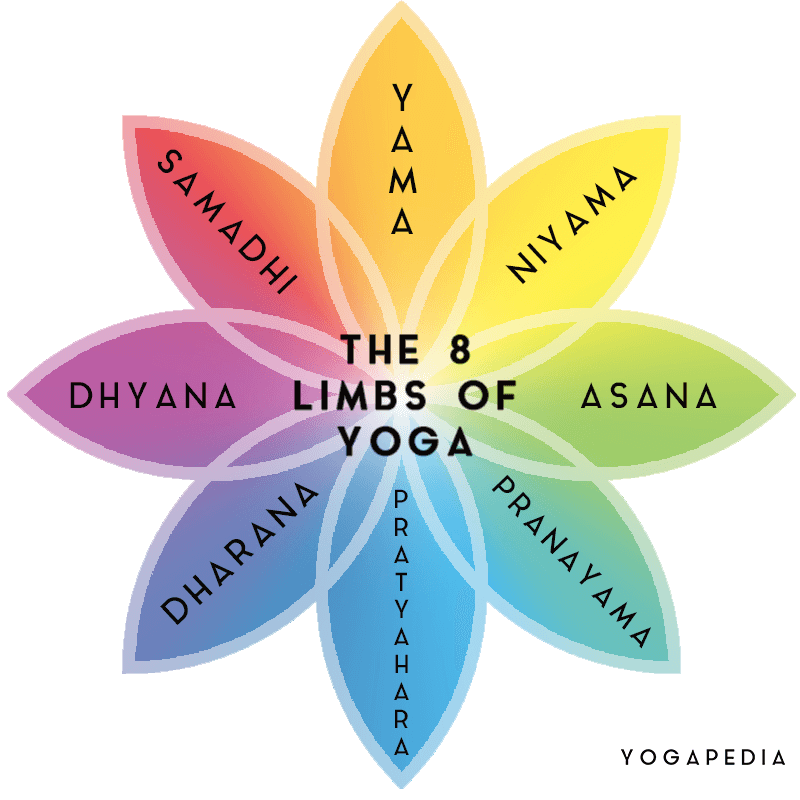
How we can use the 8 Limbs of Yoga to better our practice
There are 8 limbs of yoga that are designed as guidelines to be followed to better ourselves and our health. For many years, those in India have practiced the 8 limbs and as we become more westernised with our yoga we try to continue to incorporate these in to our practice. You’re probably thinking, what does this have to do with physiotherapy. Well, many physiotherapists are now incorporating yoga in to their treatment whether it is movement based or principle based, whether they are aware of it or not.
In this post, I want to draw your attention to the 8 limbs of yoga and how these can be incorporated in our physiotherapy, rehabilitation and pain management.
The first limb is “Yama”. Yama is the ethical standards and sense of integrity, our behaviour and how we conduct ourselves. It includes “Ahimsa” or non-violence. Non-violence can be interpreted in relation to ourselves by avoiding movements or behaviours that may injure or harm our self. An example of this is avoiding slumped sitting as this may cause neck, thoracic or lower back pain.
“Satya” or truthfulness is also included in the first limb and can be incorporated in to our practice by continuing to be truthful to ourselves. Did we do the exercises prescibed, have we focused on our postural behaviours, is what I am doing causing me pain? All of these questions we should be asking ourselves and responding in a truthful way. If we hide from our thoughts we are less likely to recover as barriers are not being addressed.
The second limb is “Niyama” or self-discipline. Self-discipline is particularly important in our recovery as it encourages dedication. When we are self-disciplined we become more independent and allow our selves to self manage better, reducing the amount of time needed to be spent at the physio and on massage tables. An example of being self-disciplined is that every day you wake up in the morning and do a short stretch routine that assists your body in participating in all of the tasks that you have planned for the day.
“Asana” or postures is the third limb. Postures do not need to be difficult, even a posture such as sitting is considered a yoga posture and actually, sitting was the first form of yoga. We need to be aware of our postures and recognise that some times we may be able to achieve something and some days we are not, but that’s ok. Circumstances change and often daily, so we need to acknowledge that and use the above guidelines such as non-violence, truthfulness and self-discipline to look after our own body.
The fourth limb, “Pranayma” or breath is probably the limb that I am most passionate about in terms of patient’s recovery, particularly for those in pain. Breath is an important tool and what is even more important is our breath control. Breath control simply means the ability to change our breathing pattern, whether that be to speed it up or slow it down, hold an inhale or exhale, or even just recognise what our breath is doing. Often when we have control over our breath our patterns of movement improve and we also notice a decrease in pain as the sensitisation of our nerves is lowered.
“Pratyahara” or withdrawal of the senses is the fifth limb. This can be a more challenging one for patient’s to grip on to it but with practice can be achieved and lead you to further achieving the following limbs. Withdrawal of the senses encourages us to draw our attention inwards and allow the external world and outstide stimuli to escape us. It’s importance in rehabilitation is great as it allows us to become more mindful, tune in to our bodies; what we are feeling and where we are feeling it. It allows us to recognise what may feel good and what may not feel so good. It gives us many answers as both clinicians and patients as we have a greater ability to pin point cause and effect.
In the sixth limb, we explore “Dharana” or concentration, our ability to focus on one single thing or point such as our foot. It allows us to engage with that single point and explore it more deeply. For example, with our foot it allows us to explore how we can ground through our toes, ball of the foot and heel, how we can raise our toes, push down through the ball and how each of these movements make us feel.
Some people may not ever achieve the next two limbs but then there are others who practice these on a daily basis. I can appreciate that with our western world it can be hard to draw our attention away and have little to no thoughts, we are so consumed with technology, business and the rush of our daily lives that it can be difficult to switch off.
The seventh limb is “Dhyana” or uninterrupted flow of concentration. The mind is still and quiet with the production of few or nil thoughts. This would be fantastic for pain management as you would presume that if you are not producing thoughts then you are not producing emotions and in term not experiencing the emotion, pain.
The final limb “Samadhi” or a state of ecstacy is a point where you transcend yourself altogether and achieve peace.
Do not be disheartened if you have just read this and thought that it sounded wonderful however you are not sure how to achieve such things. There is a famous yogi saying “practice and all will come”. Truly, practice.
Namaste
